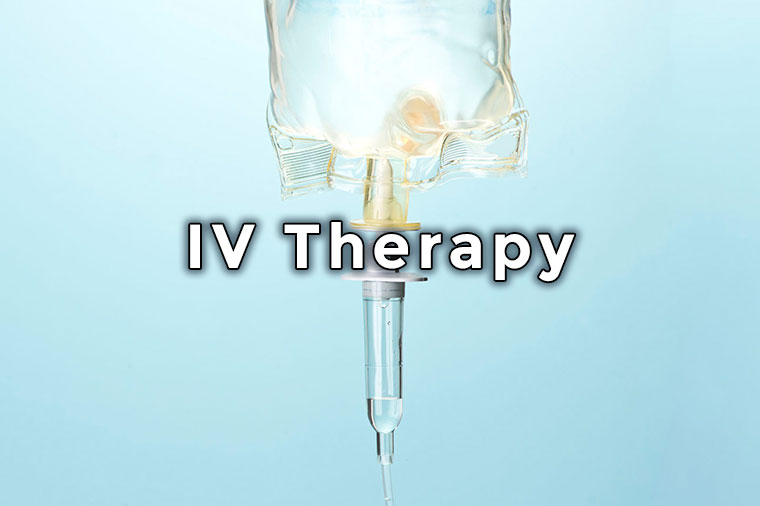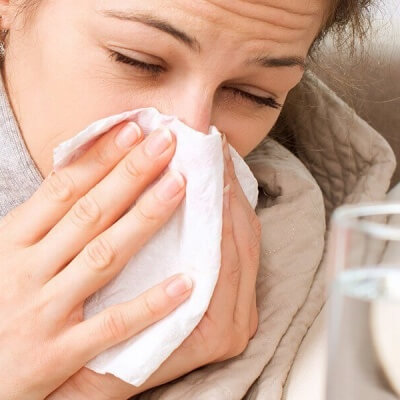Painease Clinic Discover the Benefits of Seeing a Milton Naturopath
Are you seeking natural and holistic solutions to your health concerns? Look no further than Painease Clinic, home to a team of dedicated naturopaths in Milton.
But what exactly is a naturopath, and how can they help you achieve optimal wellness? In this comprehensive guide, we will delve into the world of naturopathic medicine and explore the unique offerings of Painease Clinic. From personalized treatment plans to focus on treating the root cause of ailments, you’ll discover why Painease Clinic stands out among other naturopath clinics.
We’ll also explore the myriad conditions that a naturopath at Painease Clinic can address, including chronic pain, digestive issues, hormonal imbalances, allergies, mental health concerns, and more.
If you’re ready to take control of your health and explore the benefits of naturopathic care, this article will provide you with all the information you need to book an appointment at Painease Clinic.
What is Painease Clinic?
Painease Clinic is a renowned healthcare facility specializing in holistic healing and natural remedies, offering a comprehensive range of alternative medicine services focused on achieving holistic health and well-being.
The clinic prides itself on a patient-centred approach, considering individuals’ physical, mental, and emotional aspects to address their health concerns. Through a combination of traditional healing practices, herbal medicine, acupuncture, and dietary therapy, Painease Clinic aims to restore balance and harmony within the body.
By emphasizing natural remedies and holistic care, the clinic promotes the body’s innate ability to heal itself, empowering patients to take charge of their well-being in a sustainable and balanced way.
What is a Naturopath?
A naturopath is a healthcare professional specializing in naturopathic care, providing personalized and holistic treatments that integrate natural therapies, herbal medicine, and an integrative approach to health and wellness.
They focus on addressing the root cause of health issues, considering the whole person – mind, body, and spirit. Using various natural approaches such as nutrition, acupuncture, and lifestyle counselling, naturopaths aim to restore balance and support the body’s innate ability to heal. By emphasizing prevention and education, they empower individuals to take charge of their health and make sustainable lifestyle changes.
Their approach is centred on individualized care, recognizing that each person has unique health needs and experiences.
What Services Does a Naturopath Offer?
Naturopaths offer diverse services encompassing naturopathic treatments, wellness programs, lifestyle medicine, and patient education, aiming to provide natural solutions for holistic health and well-being.
Their wellness programs often integrate various natural approaches, such as herbal medicine, acupuncture, nutritional counselling, and physical therapy, to address the root causes of health issues. Lifestyle medicine focuses on sustainable lifestyle modifications, emphasizing the importance of stress management, exercise, and healthy eating habits.
Patient education is crucial, empowering individuals to actively participate in their health through knowledge about natural remedies, preventive care, and self-care practices.
Why Should You See a Naturopath at Painease Clinic?
Visiting a naturopath at Painease Clinic offers a unique opportunity to experience naturopathic care with a holistic approach, receiving personalized patient care and access to alternative healthcare options focused on natural healing and well-being.
By choosing to consult a naturopath at Painease Clinic, individuals can benefit from a comprehensive approach to healthcare that takes into account their physical, emotional, and mental well-being. Naturopathic care emphasizes the use of natural remedies, such as herbal medicine, dietary counseling, and lifestyle modifications, to support the body’s innate ability to heal and maintain balance. This personalized approach enables patients to address the root causes of their health concerns and empowers them to take an active role in their wellness journey, promoting long-term vitality and optimal health.
What Makes Painease Clinic Different from Other Naturopath Clinics?
Painease Clinic distinguishes itself from other naturopath clinics through its emphasis on a holistic lifestyle, preventive care, the mind-body connection, disease prevention, and the integration of complementary medicine to support overall well-being.
Its approach goes beyond treating symptoms, focusing on addressing the root causes of health issues through personalized wellness plans. The clinic’s practitioners believe in empowering their patients to take an active role in maintaining their health, utilizing natural therapies, nutritional counseling, and lifestyle modifications.
By fostering a supportive and healing environment, Painease Clinic aims to guide individuals towards long-term health and vitality, rather than merely providing temporary relief from ailments.”
What Are the Benefits of Seeing a Naturopath at Painease Clinic?
Seeing a naturopath at Painease Clinic offers numerous benefits, including a holistic approach to health, natural health solutions, guidance on lifestyle changes, effective stress management, pain relief, and overall improvement in holistic health and well-being.
Through a holistic approach, naturopaths at Painease Clinic focus on addressing the root causes of health issues, incorporating natural remedies and therapies. They provide valuable guidance on lifestyle modifications, empowering individuals to make sustainable changes. Effective stress management techniques are also emphasized, which can significantly reduce the impact of stress on both physical and mental well-being.
Naturopaths offer personalized pain relief solutions tailored to individual needs, promoting overall well-being and a balanced, healthy lifestyle.
Personalized Treatment Plans
One of the key benefits of seeing a naturopath at Painease Clinic is the development of personalized treatment plans, which prioritize individualized care and patient wellness services tailored to specific needs and health goals.
This tailored approach to addressing specific health needs ensures that each patient’s unique requirements are taken into account, leading to more effective and targeted treatment. By focusing on personalized care, naturopaths can fully understand the individual’s health history, lifestyle, and preferences, allowing for a holistic approach that promotes overall well-being.
The emphasis on individualized treatment fosters a strong patient-practitioner relationship, instilling trust and confidence in the process.
Focus on Treating the Root Cause
Another notable benefit of consulting a naturopath at Painease Clinic is the focus on treating the root cause of health issues, incorporating natural remedies, disease prevention, and holistic healing to address underlying imbalances and promote long-term wellness.
This holistic approach recognizes the interconnectedness of various aspects of one’s health, aiming to restore balance in the body naturally. By getting to the root cause of ailments, naturopaths empower individuals to take charge of their health and make sustainable lifestyle changes.
Through personalized treatment plans and natural remedies, the focus is on nurturing the body’s innate healing abilities, enhancing overall well-being, and preventing future health concerns.
Natural and Holistic Approach
Painease Clinic advocates for a natural and holistic approach to healthcare, offering alternative therapies, natural healing modalities, holistic treatment options, natural solutions, and guidance on lifestyle medicine for comprehensive well-being.
This integrative approach at Painease Clinic prioritizes natural healing modalities, encouraging patients to explore holistic treatment options that promote overall wellness. The clinic emphasizes the power of nutrition, mindfulness, and physical activity as essential components of lifestyle medicine. Patients are introduced to natural solutions that aim to address the root cause of health issues and restore balance to the body, fostering a sustainable and holistic approach to well-being.
Comprehensive Health Assessment
Patients benefit from a comprehensive health assessment at Painease Clinic, encompassing wellness programs, healthcare guidance, patient education, and preventive care strategies to foster proactive well-being and long-term health maintenance.
These assessments provide a holistic understanding of a patient’s health, allowing for personalized care plans tailored to their specific needs. By integrating preventive care strategies, patients can proactively manage their health, potentially avoiding future health complications.
Through patient education, individuals are empowered to make informed decisions about their health and actively participate in their well-being. This integrated approach promotes a culture of proactive health maintenance, setting the stage for long-term wellness and vitality.
Education and Empowerment
Painease Clinic strongly emphasizes patient education and empowerment, providing holistic care, natural health insights, preventive care information, and guidance for achieving holistic health and well-being.
This approach allows patients to take an active role in managing their health and making informed decisions. The clinic’s focus on comprehensive education ensures that individuals understand their conditions, treatment options, and the importance of lifestyle modifications. By empowering patients with knowledge, they are better equipped to prioritize preventive measures and embrace natural health insights.
This patient-centered approach fosters a sense of ownership over one’s well-being and encourages individuals to make lifestyle choices that support holistic health.
What Conditions Can a Naturopath at Painease Clinic Help With?
Naturopaths at Painease Clinic can offer effective support for a wide range of conditions, including chronic pain, digestive issues, hormonal imbalances, mental health concerns, and various other health challenges through natural health and alternative healthcare approaches.
These holistic practitioners can tailor treatment plans using natural remedies, such as herbal medicine, acupuncture, dietary adjustments, and lifestyle counseling, to address the root causes of these conditions. For chronic pain, they may integrate techniques like massage therapy and physical therapy to alleviate discomfort and promote healing.
Similarly, they emphasize personalized nutrition for digestive issues and hormonal imbalances and may recommend supplements to rebalance the body. Mental health concerns are addressed with mindfulness practices, counselling, and stress management strategies, creating a comprehensive and individualized approach to wellness.
Chronic Pain
Naturopaths at Painease Clinic specialize in alleviating chronic pain, utilizing natural remedies, holistic healing, and alternative therapies to address the underlying causes and enhance overall well-being.
They take a comprehensive approach, considering the physical, emotional, and mental aspects of pain. The clinic offers personalized treatment plans that may include acupuncture, herbal remedies, dietary changes, and lifestyle adjustments. By focusing on restoring balance within the body and reducing inflammation, patients often experience long-term relief from chronic pain.
The emphasis is on empowering individuals to take an active role in their healing journey, promoting a sense of control and well-being.
Digestive Issues
Individuals seeking support for digestive issues can benefit from the expertise of naturopaths at Painease Clinic, who focus on improving digestive health and fostering gut wellness through natural solutions and guidance on lifestyle changes.
Their approach involves identifying the root causes of digestive discomfort and creating personalized treatment plans that may include dietary adjustments, herbal remedies, and stress management techniques. The naturopaths at Painease Clinic also prioritize educating patients about the interconnectedness of gut health and overall well-being, empowering them to make sustainable lifestyle changes for long-term digestive wellness.
By integrating evidence-based natural remedies and promoting a holistic approach, Painease Clinic aims to offer comprehensive support for individuals seeking to optimize their digestive health.
Hormonal Imbalances
Naturopaths at Painease Clinic are adept at addressing hormonal imbalances, offering natural therapies, guidance on hormone balance, and an integrative medicine approach to support hormonal health and overall well-being.
Their focus on hormonal health involves personalized treatment plans that utilize natural remedies and lifestyle modifications. The integrative medicine approach incorporates a comprehensive evaluation of hormonal imbalances, taking into account factors such as stress, nutrition, and environmental influences.
Painease Clinic’s expertise in hormone regulation extends to conditions like thyroid disorders, adrenal fatigue, and reproductive hormonal imbalances. Through a combination of evidence-based therapies and patient education, individuals can achieve hormone balance and improved well-being at Painease Clinic.
Allergies and Sensitivities
Painease Clinic offers effective strategies for managing allergies and sensitivities, providing allergy relief, sensitivity management, natural remedies, and holistic treatment options to promote overall well-being.
Their approach integrates a combination of traditional and alternative methods to address allergies and sensitivities. By focusing on identifying specific triggers and personalized treatment plans, the clinic aims to alleviate symptoms and enhance the body’s natural defense mechanisms.
In addition to conventional medical interventions, Painease Clinic emphasizes the use of natural remedies and holistic approaches such as acupuncture, dietary modifications, and stress management techniques to foster a balanced and resilient immune system. This comprehensive approach reflects their commitment to supporting individuals in achieving lasting allergy relief and improved sensitivity management.
Mental Health Concerns
Individuals seeking assistance with mental health concerns can benefit from the holistic therapies and approaches offered at Painease Clinic, focusing on mental wellness, effective stress management, and the mind-body connection for comprehensive well-being.
The clinic’s commitment to mental well-being is evident in its range of services, including mindfulness practices, yoga sessions, and personalized counselling. By integrating these holistic treatments, individuals can address the root causes of their mental health concerns and develop sustainable coping strategies.
Painease Clinic’s emphasis on the mind-body connection empowers patients to achieve balance and resilience, promoting overall wellness. Their approach highlights the interconnectedness of mental and physical health, creating a nurturing environment for healing and growth.
And More
In addition to the conditions mentioned, naturopaths at Painease Clinic can support a wide range of health challenges, utilizing naturopathic care, holistic health approaches, natural remedies, and alternative therapies tailored to individual needs.
Their approach is based on the belief that the body has an innate ability to heal itself, and they work to identify and address the root causes of health issues. This can include personalized nutrition plans, herbal medicine, lifestyle counselling, and other natural interventions to support the body’s optimal functioning.
Whether managing chronic conditions, improving overall well-being, or preventing illness, Painease Clinic offers a comprehensive range of alternative therapies that prioritize holistic well-being.
How Can You Book an Appointment at Painease Clinic?
Booking an appointment at Painease Clinic for naturopathic care and holistic treatment is simple, allowing individuals to access personalized patient care and embark on their journey toward holistic well-being.
Upon seeking care at Painease Clinic, potential patients can initiate the appointment booking process by contacting our friendly and knowledgeable staff. Whether through a phone call or online form submission, patients can easily schedule a convenient time for their initial consultation with our experienced naturopathic practitioners.
Our clinic prioritizes patient well-being by ensuring that each appointment allows ample time for comprehensive discussions and individualized treatment plans tailored to each person’s unique health needs.









